 |
Home | Search | Browse | About IPO | Staff | Links |
 |
Home | Search | Browse | About IPO | Staff | Links |
|

Shirley J. Burton, In the Victorian Era, women were expected to be good homemakers, mothers, and wives. Theirs was a sphere separate from men; women were expected to be passive and supportive. However, some women worked to change those restrictive roles. The consequences led to both triumphs and tragedies in their own lives even as they helped change prevailing ideas about women's proper roles. Ida Craddock, Adelaide Johnson, and Laura Dainty Pelham are three Illinois women who made a difference.
IDA CRADDOCK
Perhaps the most famous woman ever denounced as obscene in Chicago was Fahreda Mahzar, who assumed the stage name "Little Egypt" when she performed at the 1893 World's Columbian II Exposition. Dressed in a gauze shirt, vest, and skirts reaching nearly to her ankles, Mahzar moved her feet and legs only slightly as she swayed her arms and torso in an undulating motion that critics condemned as indecent. Promoters described Little Egypt's performance as the "danse du ventre" (belly dance) but Anthony Comstock, the nation's foremost censor, called it the "hootchie cootchie" and demanded that it be shut down. In the flurry of controversy that followed, Ida Craddock, a Chicago shorthand expert, sex counselor, and social purist wrote a four-page defense of the dance, describing it as "religious memorial inculcat[ing] purity and self-control." In the end, Little Egypt stayed in business, probably because her show was too popular to close down. But while Little Egypt avoided trouble with the law, Ida Craddock did not. Craddock again defended the performance in a published article that Anthony Comstock, in his role as the post office's "special agent," declared unmailable. Social purists were middle-class reformers who aimed to "purify" American morals. The diverse group advocated marital fidelity and a single sexual standard for women and men. They opposed prostitution, masturbation, abortion, and contraception. It is not Little Egypt, but Ida Craddock, 22 who best typifies the women prosecuted under the federal obscenity law in the U.S. District Court at Chicago during the last years of the nineteenth century. Few of those women ran afoul of the law providing titillating amusements such as Little Egypt's. Most incurred legal censure by pressing a social agenda that conflicted with prevailing standards of sexual propriety, public speech, and accepted female behavior. The 1873 federal obscenity law was rooted in social purists' attempts to eliminate prostitution and venereal disease and to attain a single sexual standard of marital chastity for both women and men. But few agree on how that change should be achieved. Some, like vice-crusader Anthony Comstock, argued for government suppression of sexually explicit materials, which they believed threatened self control and contributed to moral decay. The 1873 law represented a significant victory for censorship advocates. It prohibited sending "obscene, lewd, and lascivious" materials through the mail, but it did not define what those terms meant, except that they included "any article or thing intended for the prevention of conception or procuring of abortion" or advertisements for those articles or things. Ida Craddock's defense of the "danse du venire" was based on a different agenda of moral reform. Like Anthony Comstock, she sought a single sexual standard, marital fidelity, and limited sexual relations. Both Craddock and Comstock condemned prostitution, masturbation, contraception, and abortion. But unlike Comstock, Craddock believed it proper to discuss sexual matters publicly. "I need make no plea for the propriety of my subject," she wrote, "What concerns us all is eminently fit for discussion by all, and too much light cannot be thrown upon it." Ida Craddock provided sexual counseling in a small office on Dearborn Street in Chicago. Those too modest to come to her personally could enroll in her mail courses. Craddock's second confrontation with Comstock came in 1899 when a medically oriented journal, the Chicago Clinic, published her pamphlet, "Right Marital Living," Comstock decided she should be stopped. Ida Craddock was indicted in the Chicago federal court on October 27,1899. Charged with mailing copies of "Right Marital Living," she stayed out of jail only because criminal lawyer and free-speech advocate Clarence Darrow posted her bond. (Darrow would later gain fame in the Leopold and Lobe case (1924) and the Scopes "Monkey Trial" (1925)). The indictment quoted only excerpts from the pamphlet, which prosecutors claimed was too "obscene, lewd, and lascivious" to be entered into the official record. Craddock pleaded not guilty, and the prosecution subpoenaed Anthony Comstock as a witness. Sensing her cause lost, Craddock changed her plea to guilty in return for a suspended sentence. During the following week, Craddock was so depressed that she considered suicide. Soon after her legal difficulties in Chicago, Craddock moved to New York, Anthony Comstock's bastion. There she deliberately defied the most powerful censor in the nation by continuing to mail her pamphlets to clients. "I have an inward feeling," she wrote, "that I am really divinely led here to New York to face this wicked
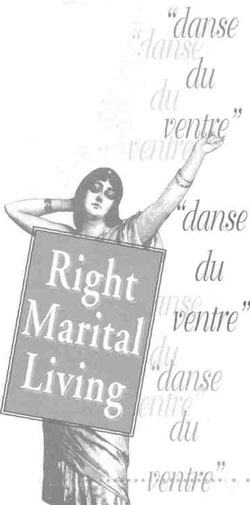
23
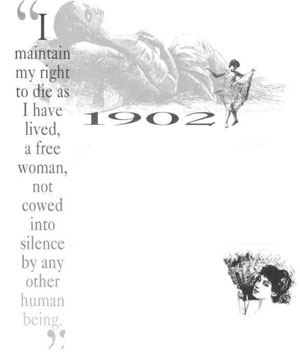
and depraved man Comstock in open court." It was, however, Craddock's martyrdom which was at hand. On March 5,1902, she was arrested under a New York "Little Comstock" law and sentenced to three months in the city workhouse. Craddock "took her sentence in stoic silence," a newspaper reported, "and looked neither to the right nor left as she was led [away]." After completing her sentence, Craddock was released, then immediately re-arrested under the federal Comstock law. She refused an offer to escape a prison sentence by pleading insane. On the morning she was to be sentenced, Craddock drank lamp oil and fatally slashed her wrist. In a long note to her mother, she wrote, "I maintain my right to die as I have lived, a free woman, not cowed into silence by any other human being." By sacrificing her life rather than her principles, Ida Craddock became a martyr around whom free speech advocates rallied. Ida Craddock, a physician wrote in a public letter, "was a pure-minded, intelligent woman, of humanity...She has been hounded to the death by these blood-hounds of the law." After the Columbian Exposition, Fahreda Mahza appeared in vaudeville for several years, then danced for charity during the Spanish-American War. Imitators less discreet than she caused minor scandals at local carnivals and tent shows, and the real Little Egypt often had to explain that the others were impostors. She had always been a well-chaperoned Moslem girl. In 1905 Mahzar retired from public life until the Chicago Century of Progress fair in 1933, when she returned to the stage clad in the same long skirts she had worn forty years earlier. But times and attitudes had changed. The law now recognized the legitimacy of sexual information like that Ida Craddock had written: the Supreme Court had found not obscene a pamphlet of sexual information for adolescents, and the New York District Court vindicated a similar book for adults. Fashionable street clothing left arms and legs bare, and Little Egypt no longer possessed her ability to shock. At the 1933 fair she lost her audience to fan-dancer Sally Rand. 24
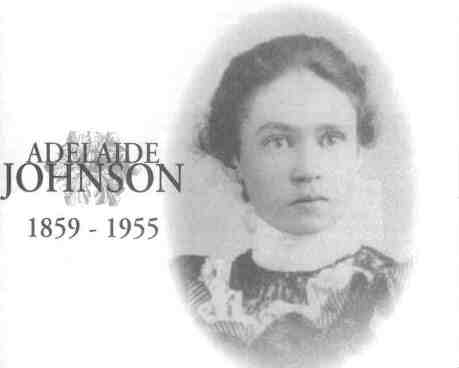
In her hurry to get to her art studio on a cold January morning in 1882, Adelaide Johnson failed to notice that there was no elevator in place as she stepped through the opening. She fell twenty feet to the bottom of the shaft. The result, in her own words, was "a shattered body—bones to nerves." Curiously, without that fall, Adelaide Johnson might never have become the sculptor of the nineteenth-century women's movement. A jury awarded her damages of $15,000, which she used to fulfill the dream of every aspiring nineteenth-century artist— to study with the masters of painting and sculpture in Europe. Certainly the economic situation of her parents and of her own early years would have precluded that. Born in the west-central Illinois village of Plymouth in 1859, Adelaide Johnson was the first child of Christopher and Margaret Johnson. The family lived in a log cabin on a small farm without hardship, but with modest comforts. Johnson learned traditional feminine skills- spinning, sewing, churning, and food preservation. Her artistic talent first appeared in the sketches she made on frost-covered cabin windows and in the likenesses of family members she scratched in the sand along a nearby creek bank. An Indian woman, the wife of a neighboring farmer, taught Johnson to dig the smooth, reddish clay by the creek and shape it into forms. After completing her education in a one-room school when she was sixteen, Johnson's parents encouraged her artistic development by sending her to board with an older half brother while she studied at the St. Louis School of Design. It was the best art training her family could afford: a vocational school that trained women in such decorative arts as painting china and creating Victorian parlor bric-a-brac. After her graduation in 1879, Johnson opened an art studio in the Central Music Hall studio in Chicago. In 1896 Johnson's friends celebrated her surprise wedding as the bonding of a "new woman to a new man." The groom, an Englishman named Alexander Jenkins, was twelve years younger than she, although Johnson discounted the importance of age. "We never either of us," she said, "tell our age, as we reckon not by years, but by growth." She lied, however, on their mar-
25
riage license, claiming she was twenty-four instead of thirty-seven. Jenkins was twenty-five. Jenkins, with whom she shared beliefs in Christian Science, theosophy, and vegetarianism, legally changed his last name to Johnson at the time of their marriage as "the tribute that love pays to genius." In 1923 her most ambitious work, a memorial to the nineteenth-century women's movement, was placed in the U.S. Capitol in Washington, D.C. Carved of seven and one-half tons of white Carrara marble, the monument commemorates the pioneer suffragists with life-sized likenesses of Susan B. Anthony, Elizabeth Cady Stanton, and Lucretia Mott. At the dedication, Jane Addams insisted that its placement in the capitol meant that women were "coming into their own." Adelaide Johnson had been commissioned to execute the group sculpture by the National Women's party, a militant group whose members had picketed the White House, chained themselves to the gates of the President's home, and gone to jail in their fight for women's suffrage. Johnson accepted the contract because of her political convictions. The $4,000 she was promised for it would barely cover expenses. Johnson knowingly limited the financial rewards of her profession by devoting her talents to the women's movement. The feminist leaders whom she chose to model usually lacked the means to pay for marble portraiture. When her financial situation became critical, Johnson remained unrepentant, even though her commitment cost her highest aspiration—a gallery of her own with marble portraits to stand as a permanent memorial to women who had worked for the liberation of their sex. In old age Johnson became destitute and infirm and was forced to live on the charity of friends and admirers. Faced with eviction from her Washington, D.C., home in 1939, Johnson smashed with a hammer several of her "white children," as she called her marble portraits, then called reporters. Art and fortune failed her, but dignity and wit did not. With a natural talent for self-promotion, Johnson publicly celebrated her one-hundredth birthday in 1948, when she was actually 88. She appeared on popular television quiz shows, winning prizes and receiving pledges of money from sympathetic viewers. Adelaide Johnson suffered a stroke and died on November 11, 1955. A Time obituary hailed her as a "famed sculptress and old time suffragette" and listed her age as 108 though she was only 96. A more fitting tribute had appeared in the Washington Daily News twenty years earlier: "Of such courage the women's movement flourished, and this little pioneer still shows in the face of tremendous adversity the spirit that advanced women's position so much in the last 100 years."
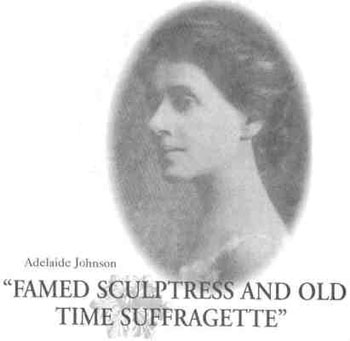
26
No one is sure why Laura Mount came to Chicago in the late 1860s. Born in Southwick, Massachusetts, in 1849 to a socially prominent family, she was remembered as one of the best singers in the area's schools. When she finally arrived in Chicago late in 1868, she found a job as a public school teacher, often teaching the children through the use of songs and simple plays. In early 1870 she met and quickly married Albert Dainty, a salesman. With her new husband she watched the Chicago Fire sweep to the north from where they lived on South Wabash Street, not knowing how much that fire would change the city and herself. As the ashes of the Chicago Fire cooled, Laura determined to begin a stage career by speaking on the lyceum circuit. Maturing in talent, confidence, and beauty, she decided in 1875 to become a part of a traveling theater company. As a part of that company she visited every state in the Union and played in nearly every large town and city in the nation. She quickly became a star and often played the role of the beauty in her favorite production, "A Mountain in Pink." By 1886 Laura Dainty had grown tired of hearing her husband complain of the length of her absences from home and of the adulation showered on her by others. His demand that she play the role of dutiful wife and mother to him and their only child led her to divorce him. While performing in Milwaukee in 1892 Laura met and married Fred Pelham, the manager of the Redpath Lyceum. Laura Dainty Pelham (she kept her first husband's name as a professional name) toured the nation with success as the major talent of the Pelham Literary and Musical Agency. By 1900 Fred and Laura settled down in Chicago and brought her daughter to live with them. Yet Laura found that even the more liberal Fred Pelham had domestic expectations for her that she could not accept. Her membership in the Hull House Women's Club since the early 1890s and the talk there of woman's suffrage had radicalized her. Deeply moved by the plight of the many poor children she daily saw picking through piles of garbage for survival, she realized that she had changed her view of the role that she needed to play in life. Laura Dainty Pelham, as the president of the Hull House Women's Club, aided Jane Addams in her crusade to clean the accumulating mass of garbage from Chicago's streets. Laura even declared for the position of alderman in the notorious Nineteenth Ward against the well entrenched conservative John "Johnny de Pow" Powers in the continuing battle to improve the urban environment. Dainty's husband could not understand her passion for reform. In late 1904 she renounced her marriage, declared for socialism and the right of women to vote, and became a full-time worker for Jane Addams at Hull house, taking up residence there. Adams found additional work for Laura that suited her talents. Laura was given the freedom to both entertain the young people who flocked to the Hull House and to provide theatrical programs that would complement the educational programs for which Hull House had become noted. To that
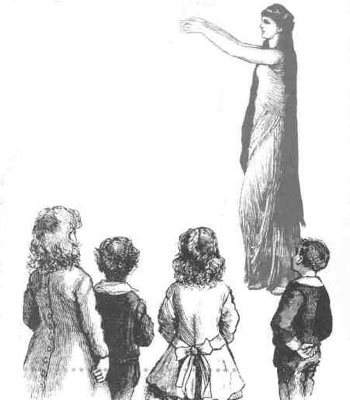
27
end, she organized the Hull House Players, which produced two plays a year and a series of variety shows. Remembering her days as a school teacher, Laura Pelham believed that theater could serve as a major educational as well as recreational medium. This suited Jane Addam's view completely. Laura's history as a noted Lyceum educator and entertainer as well as a successful agent for the Redpath Musical Bureau allowed her to choose educational dramatic presentations for the Hull House Players. Her actors learned about serious issues dear to the heart of the Progressive movement while they practiced theatrical techniques that helped to educate and successfully entertain Chicago's theater-goers. Emmett Dedmon, in his book Fabulous Chicago (1981), noted that the Hull House Players even premiered such socially important works as John Galsworthy's "Justice" at which "Theodore Roosevelt was seen mingling with the first night audience of working men and their families." By 1915 Laura Pelham was leading literary tours of England and the continent. While she was away, others attempted to take control of the Hull House Players and produce plays with a lighter content. Upon her return, Pelham, with Addams' help, reasserted her claim to leadership and produced plays with a more "American," though still socially responsible, message. When Laura Dainty Pelham died in January 1924, her casket was displayed at Hull House for twenty-four hours. Hundreds came to pay homage. Laura's husband, Fred, whom she had never divorced, did not attend her funeral service. After the Hull House service, she was buried alone in an out-of-the-way corner of Forest Home Cemetery. A simple stone with only her name and dates carved on it marks the place where the woman who was instrumental in bringing the theme of socially conscious theater to Chicago now lies virtually unremembered. Click Here for Curriculum Materials 28 |
|
|